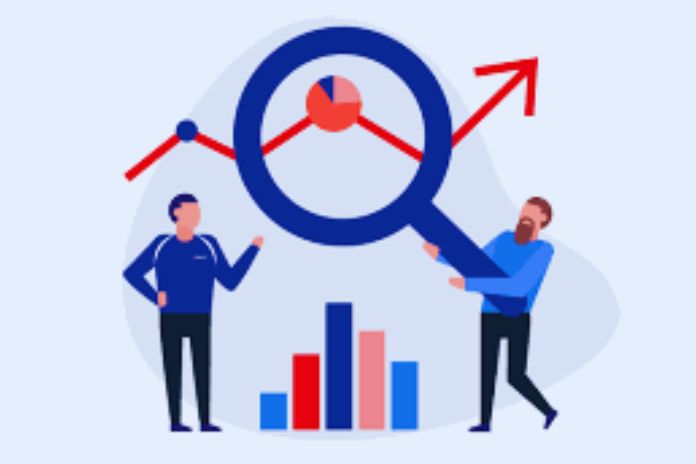Logistics indicators are KPIs used by companies with the aim of quantitatively measuring the organization’s performance in achieving its objectives and implementing strategies in this sector.
However, performance indicators are not used exclusively in the logistics area. They can extend across the entire organization, evaluating the performance of critical processes within it.
So, what is the reason to use them in a specific area like logistics? Simple: logistics planning is a company’s biggest differentiator in the competitive market, allowing it to stand out compared to its competitors.
Want to understand this better? Continue reading this post to learn about the five most relevant logistics indicators and their functions!
What Are KPIs?
As we said, Key Performance Indicators (KPIs) are metrics used to evaluate how the standardization of processes in an organization is being developed to achieve pre-established goals.
These indicators vary according to the company; that is, they are unique to each organization, as they must be in accordance with the strategy adopted by each one.
So that you understand better, in a given organization, the crucial indicator may be the product delivery time. In another case, the main KPI may be the cost of quality.
How Important Is It To Measure Performance Indicators?
Imagine you want to understand how the organization is achieving its goals. So how do we do this? Well, you can only manage what you measure!
This is where KPIs come in, as they are the methods that indicate organizational performance, extracting information and ensuring that all hierarchical levels move in the same direction.
In other words, these indicators are the company’s communication vehicles, allowing everyone involved to understand what their objectives are and work towards the same goal.
Thus, all employees from the most diverse hierarchical levels can work together to achieve the organization’s strategic objectives.
What Are The Logistics Indicators?
Before discussing logistics indicators, let’s show why KPIs are so important in this sector. The answer is more straightforward than you might think: they are used to demonstrate the level of success achieved when putting different decision-making strategies into practice.
Thus, the indices measure the levels of services performed in the most diverse business logistics processes, pointing out which situations deserve special management attention.
Inventory Turnover
This type of KPI calculates the number of times the company’s stocks were used in a given period of time.
Inventory turnover is a way of evaluating the acceptance of the organization’s products by its target audience, in addition to identifying how the products in stock are being managed.
Furthermore, it is possible to check stock accuracy, which is the difference between the information in the control system and the actual physical stock. For this value to be as accurate as possible, it is recommended that it be as close to 100%.
Finally, it is still possible to measure the average inventory level — the period for which the organization can operate with its current inventory.
Delivery Service Level
This is an indicator known as output, or result, as it measures which KPIs are related to the effectiveness of the process, evaluating the final delivery of products.
The level of delivery service is related to the period between receipt of the order and the actual date of delivery. Measurement varies and can be daily, monthly, or weekly, according to the customer’s needs and the type of product.
This indicator is also known as Order Cycle Time (OCT). In order for it to be measured in the most correct way possible, it is recommended that a period of less than 24 hours be considered for locations close to the company or within a limit of up to 350 kilometers.
Loss And Delay Rates
This KPI is related to one of the biggest headaches for managers: the percentage of products that were not delivered on the correct date or were lost. It is essential for any organization, as it is directly related to end customer satisfaction and company growth.
The transportation of products has unforeseen events that happen very regularly and end up affecting the product delivery time. However, if, on the one hand, these events are unpredictable, it is possible to consider this factor when calculating the deadline for receiving the product and avoid complaints.
Thus, as this indicator frequently measures delays and losses, it becomes easier to make decisions, as they can be based on real numbers. Furthermore, this percentage can be reduced with an appropriate strategy, increasing customer satisfaction.
OTIF
On-time and in full are the most important of the KPIs for logistics. This performance indicator measures procedures from the consumer’s perspective. In other words, it represents customer satisfaction with the services provided by the company.
Thus, with OTIF, business management can understand the level of effectiveness in meeting deadlines (on time), as well as the efficiency of customer service procedures (in total).
Waiting Time
The waiting time indicator is related to several logistics factors, such as problem-solving, receiving information, and perception of changes.
This KPI is used not only to understand the response time for customer requests but also to measure the time it takes for information to reach all interested sectors with real-time data analysis.
Many companies consider waiting time too simple, but it is a significant performance indicator that should be addressed. It measures the interaction of the company as a whole, and its results can be used to make improvements in the most diverse sectors.
Also Read: The Facebook Pixel Conversions API: What It Is And How To Use It

